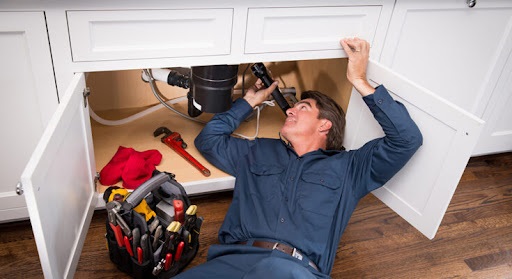
1. VENTING WATER
The wear and tear on the parts of your expansion tank could cause it to leak water. To find the source of the leak, take a look at your tank.
You can tighten the fitting yourself if the leak is coming from the top of your tank’s pipe. You can tighten the fitting with a wrench, but not too much.
It’s more serious if the leak is coming directly from the tank. This is probably not a problem you want to do a bit of DIY.
You should contact a plumber in this situation. A plumber will be able to determine if the tank can be fixed or if it needs to go out of business.
2. AIR BLOCKAGE
Your expansion tank is used to hold air in your hot water system. These systems require air. Hydronic airlocks are when air gets trapped.
This type of block will prevent water from leaking through the heater or pipes. You may notice that your radiators don’t heat up, this is likely an air block.
These blocks are prevented by expansion tanks. However, if the block persists, it is likely that your expansion tank is not working correctly. An plumber can diagnose and repair any expansion tank problems.
3. STEEL EXPANSION TANK NEEDS RECHARGING
There are two types of expansion tanks. The older tanks tend to be made of steel.
Steel tanks contain water and air to maintain pressure. Water can absorb very small amounts of oxygen over time. The tank will lose pressure when that happens.
Recharging the tank will fix this problem. Either call a professional or recharge the expansion tank yourself.
You can recharge an expansion tank by closing the isolation valve. Drain the water from the tank and then reopen the valve to refill it with the correct amount of water.
This DIY fix is the most difficult part. Because you cannot see into the tank, it’s difficult to tell. This is why it might be a good idea to get professional help.
4. DIAPHRAGM TANK – NOT ENOUGH AIR
Modern expansion tanks are equipped with a diaphragm. This tank has a diaphragm, which keeps water and air separate. Because water absorbs oxygen, diaphragm-expansion tanks don’t lose their pressure.
Losing small amounts of air through a valve is the most common problem with an expansion tank. This is when more air must be added to the tank.
It is easy to add air. You can use an air compressor, or a bike tire pump. Use a common valve attachment to attach either one. The tank should be filled to 12 PSI.
You may need to replace your diaphragm if the tank doesn’t hold its air pressure or if it is filled with too much water. A professional plumber can help you determine if the tank needs to be replaced or if it is time to replace it.
5. CONDENSATION
You should contact a plumber if you see condensation buildup around your expansion tank. It is almost always a sign that there is a problem.
Condensation can lead to rust. Condensation can also cause water to drip onto the electric wires below. If the condensation drops are not removed quickly, they can cause damage to the floor below the tank.
We recommend calling a plumber to diagnose condensation buildup.
This post was written by Joey Denick. Joey is the Owner and Operator of Clog Kings. At Clog Kings, LLC, we pride ourselves on our dedication and efficiency. We know you don’t have time to waste. That’s why we work fast to get your home or commercial building back up and running in no time. If you are looking for plumbers in Clearwater FL then look no further because we got you covered!





